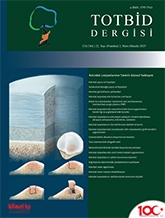
Large complex chondral lesions of the joints are common, and their treatments are challenging. Several surgical treatment options are described in the literature for chondral lesions, such as microfracture, autologous osteochondral transplantation and autologous chondrocyte implantation. In case of failure of these surgical methods or patients with the massive osteochondral defect, fresh osteochondral allograft (OCA) has been used as a biological salvage treatment option for the joints. The principle of fresh OCA is the replacement of cartilage defects and subchondral bone with an osteochondral allograft transplant. This allogeneic osteochondral unit consists of mature hyaline cartilage with viable chondrocytes along with an underlying subchondral bone. Allogeneic tissues are obtained from young patients under the age of 35 who have not had any previous cartilage damage. The tissues obtained from the donor and then all the serological tests performed. Allogenic tissues are not frozen and kept in the appropriate environment. In the literature, fresh OCA transplantation is described as a reliable treatment option for cartilage defects. The aim of this study to present clinical and radiological outcomes of the fresh OCA transplantation and describe the surgical technique with the allograft tissue process for the treatment of the osteochondral defects of the joints.